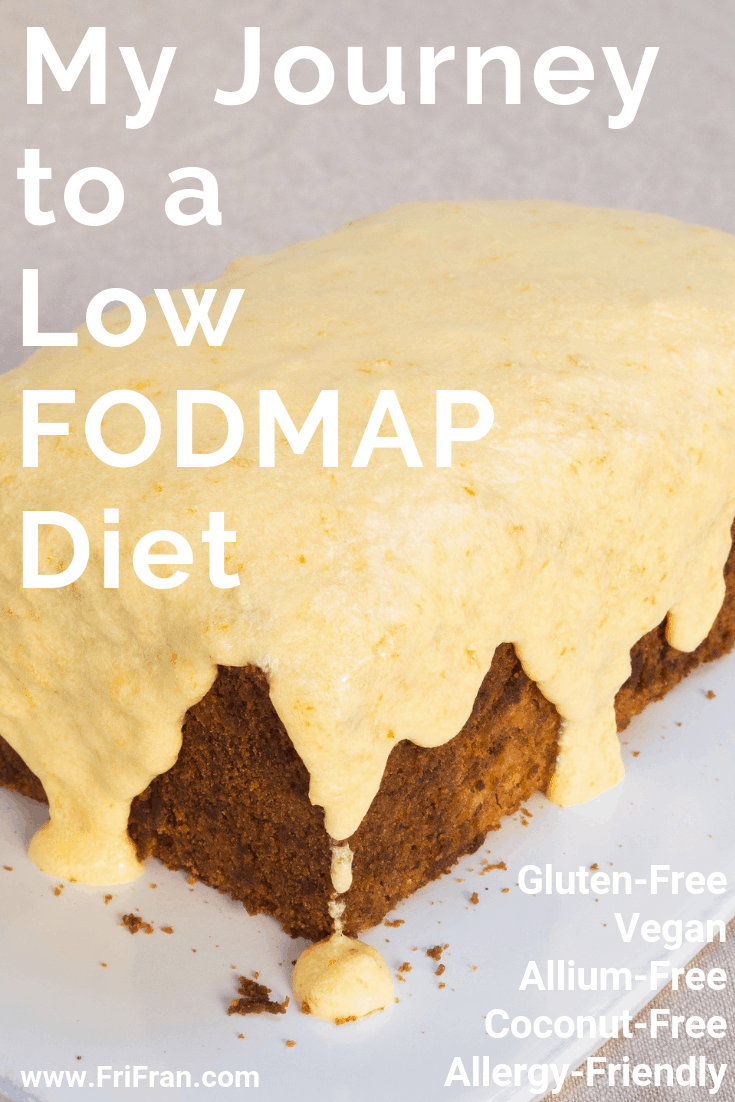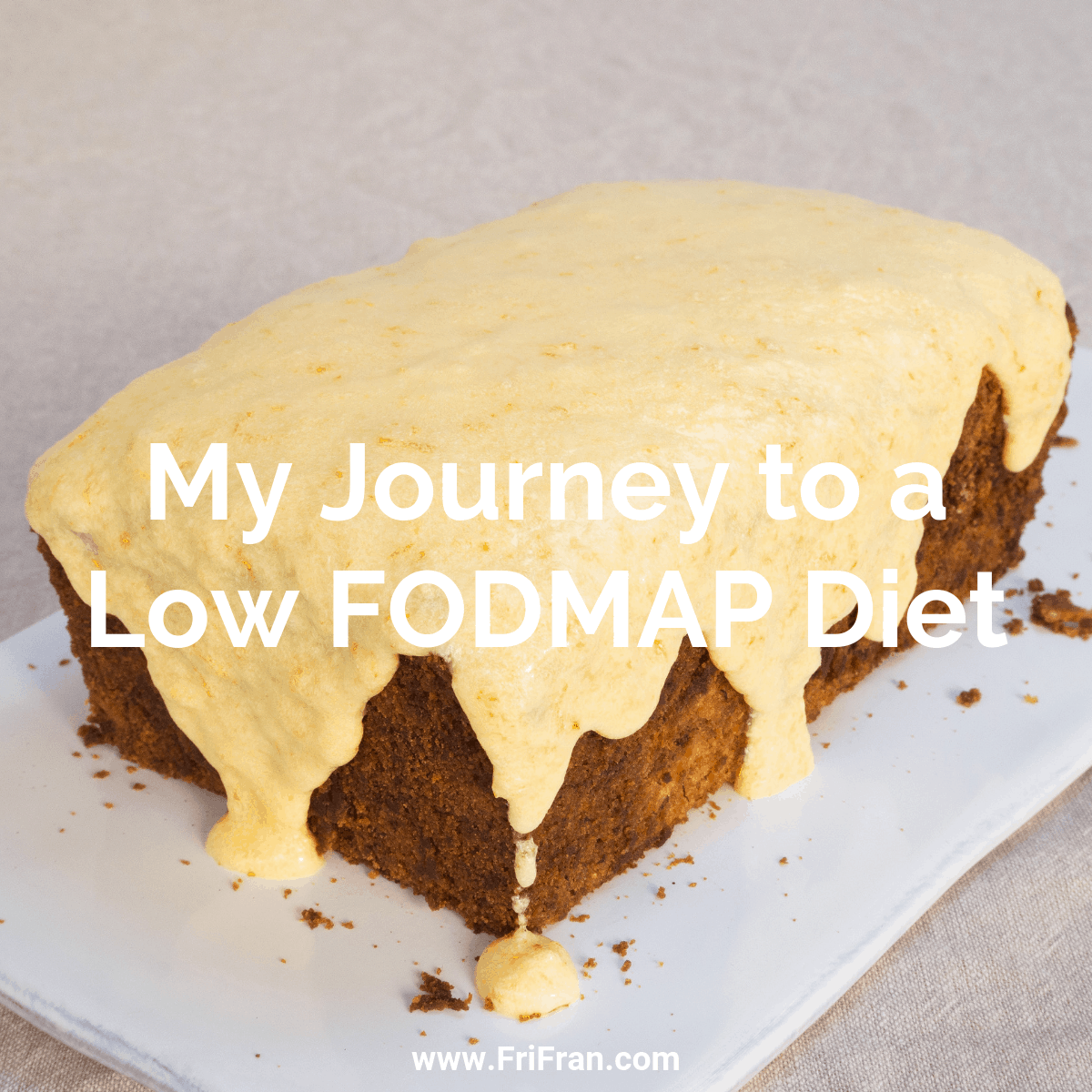
Several years ago, it was suggested I see a dietitian to try a low FODMAP diet… It took a long time to get to that point and I was willing to try almost anything by then to ease my overwhelming symptoms. I was already gluten-free and vegan. How hard can a low FODMAP diet be? Here’s my journey to a low FODMAP diet. Or, rather, my journey to a gluten-free vegan low FODMAP diet…
I Have Really Bad Gut Symptoms or Really Bad GI Symptoms
Sound familiar? Is that you? It was me. I had really severe gut problems for many years. Plus other symptoms I knew were exacerbated by what I was eating but I couldn’t find a pattern.
I had severe cramps, rocketing temperatures, clammy skin, nausea, bloating, blinding headaches, exhaustion, sickness and really, really, really bad diarrhoea (many, many, many times per day, so many that the dietitian I eventually saw was horrified and had never heard of someone having it so bad – TMI I know!). I was finding it difficult to function and hold down a job.
My symptoms were really debilitating and I was fobbed off for years with some incredible comments
- ‘you’re vegetarian so you’ll go more‘
- ‘it sounds like IBS, we can’t do anything‘
- ‘are you stressed‘ (I am now!)
- ‘your blood tests are normal‘
- ‘sounds like runners tummy‘ (seriously?).
I got fooled into thinking I was within the bounds of normal. I got used to my ‘normal’ but something really nagged at me. I realised I wasn’t ‘normal’, far from it. I was pretty sick and got so fed up with the gastroenterologist I had seen (the gastroenterologist of the runners tummy comment which made me apoplectic) I became desperate and realised that my only option was to take this into my own hands. I decided on a full-on exclusion diet. I rethought that a day later after reading an article about coeliac disease. I cut out gluten immediately and within two weeks I saw a dramatic improvement. I was still very sick but it was a significant change. After a couple of months I decided to test myself and ate gluten for the day and I was super, super sick. Okay gluten is not my friend. I will never intentionally eat gluten, ever, again. My gastroenterologist had refused to do an endoscopy previously to check for coeliac disease as my blood tests were ‘normal’ (that word crops up a lot). I understand much more now and (if I knew then what I know now) I would have pushed for an endoscope whilst I was still eating gluten. Blood tests are not always reliable.
Although I’d cut out gluten I still had lots of pretty terrible gut symptoms (and many other symptoms). I was eventually referred to a dietitian. A truly lovely and helpful dietitian talked me through the low FODMAP diet and had lots of helpful info on doing the diet whilst gluten-free and vegan. She was so incredibly helpful and supportive. It wasn’t easy for the first month or so but it was fine. You work things out pretty quickly. I got used to the diet. I didn’t notice any significant improvements but I was already excluding many groups (gluten/ wheat for one plus I already knew polyols e.g. sorbitol and manitol caused me significant problems as did lots of fruit). The reintroduction was interesting. I struggled to reintroduce lots of things including alliums (onions, garlic, leaks etc.), mushrooms and lots of fruits. I was pretty frustrated but at least I knew what foods would make my symptoms worse.
I always hated onions! I really did and I did notice, but never put two-and-two together that garlic and onions made me feel really sick, affected my throat and often gave me blinding headaches. That’s probably one of the reasons I really didn’t like onions (plus the texture of cooked onions was always horrid).
The Causes of my Gut Problems
Many of my health issues and symptoms are not directly related to FODMAPs. I have several conditions that affect my GI system – being aware of FODMAPs helps enormously.
I have Hyper-mobility Spectrum Disorder (HSD) which is similar to Ehlers Danlos Syndrome (Hypermobility Type). HSD affects my GI system pretty badly. I eat Gaviscon like it’s going out of fashion to reduce the ‘washing-machine’ stomach I usually have and try to help the acid reflux reaction (even though I don’t have reflux! Weird!)
I also have a Mast Cell Activation Disorder (MCAD). This causes lots of symptoms including reactions to foods, smells, exercise and complete exhaustion.
HSD and MCAD combined with severe endometriosis (and adhesions on my bowel and bladder) make my GI system a whole world of pain. High FODMAP foods can make my symptoms from the above worse. What fun eh?
In my last post I talked in more detail about what the low FODMAP diet is you can read it here: Gluten-Free and Vegan and Low FODMAP
How Do I Start the Low FODMAP Diet?
A low FODMAP diet is very difficult to do on your own and it’s more challenging to do a Gluten-Free and Vegan and Low FODMAP diet. It involves cutting out significant food groups and it is difficult to understand at first. In the UK you are advised to only do this under the direction of a dietitian.
Additionally you only do a low FODMAP diet for a month (or slightly longer if directed) before starting to reintroduce FODMAP foods to identify what you are most sensitive to (if any!).
If you think a low FODMAP diet might be helpful for you, talk to your GP or medic who can refer you to a dietitian who can work with you to get this right.
Low FODMAP Diet and the Long Term
My journey to a low FODMAP diet was long a tortuous but ultimately helpful. That’s not to say it’s some kind of miracle cure. Understanding low FODMAP is one tool in my toolbox to manage my health (I was going to go into an analogy with hammer and smashing things up but that might not be helpful!).
It’s incredibly helpful for me to understand the effect high FODMAP foods have on my and my GI system. Sometimes, when I’m having a hard time GI-wise, I reset and go back to a low FODMAP diet for a very short time. I find this helpful to manage symptoms that have become out of control (when everything I eat causes me problems and leaving the house is a challenge!). I do it only for a week or two and then start to reintroduce foods again.
However, there are some high FODMAP foods to usually avoid (if I can). I avoid alliums as much as I can (this isn’t always possible, especially when eating out) and I know what to expect when I eat them. It’s just not worth it! I also avoid apples, peaches, pears etc. as I really can’t bear the effect on me. Interestingly as a child I noticed the effect pears had on me so this is something that’s been with me all my life.
Understanding FODMAPs is hugely beneficial for me. Understanding what they are and how they act means I can manage them much better in my diet and understand the impact they might have on me. I know the impact they will have on me if I eat a little (or too much) high FODMAP food. Being informed means I can make a choice.
Low FODMAP is not a diet for life and it’s not something you should embark upon without the support of a dietitian. Understanding FODMAPS means you might be able to manage your FODMAP intake and therefore your symptoms better. If the low FODMAP diet works for you it’s very, very positive.
How Do I find A List of Low and High FODMAP Foods
If you are doing the low FODMAP diet under medical supervision and want more info there are lots of resources to help you on a low FODMAP diet. I’ve also produced a handy cheat-sheet with a quick reference to high and low FODMAP foods to help you.
Low FODMAP is relatively new and foods that are low or high FODMAP are still being identified to the available lists are not comprehensive at all. Low FODMAP is a work in progress…
***GET YOUR GLUTEN-FREE AND VEGAN AND LOW FODMAP CHEAT SHEET BY CLICKING HERE***
Gluten-Free, Vegan and Low FODMAP Recipe Ideas
It can seem incredible daunting if you are gluten-free and vegan to then make an adjustment to low FODMAP. It isn’t boring but it cab be challenging to work out what is (and isn’t!) low FODMAP. Where on earth do you start? Here are some recipes that helped see me through my early low FODMAP period and through times when I need to reset myself and take out high FODMAP foods as my GI system has gone crazy!!!
Let’s start with a delicious summer soup you can serve chilled (or hot too!). Low FODMAP (and GF + Vegan) summer soup doesn’t come much better than this Carrot and Lemon Soup. So light, so fresh and so tasty. I adore this soup. It’s a really fab light lunch but also amazing for a dinner party opener.
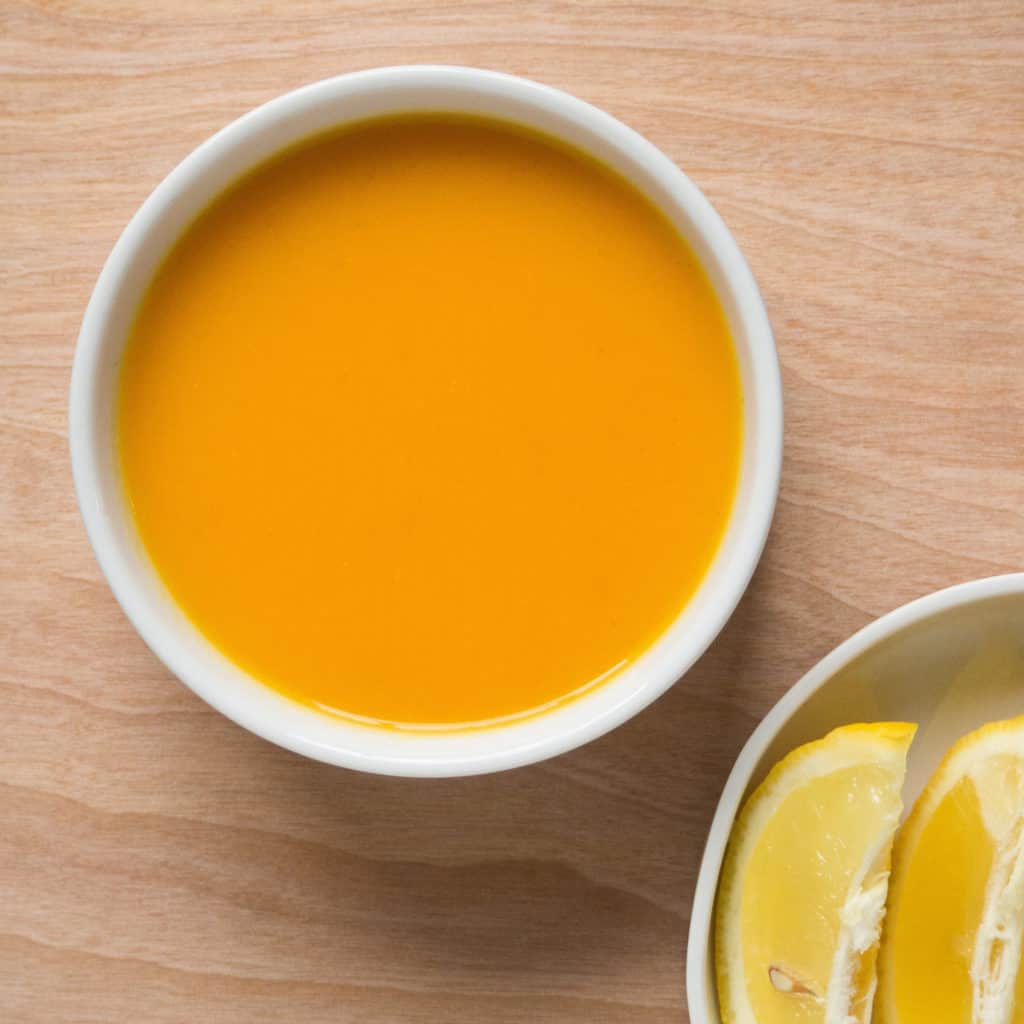
One of my favourite summer meals is Ratatouille. It’s so easy to make, so seasonal, so cheap and packed full of the colours of summer. I adore Ratatouille with brown rice. It’s delicious.
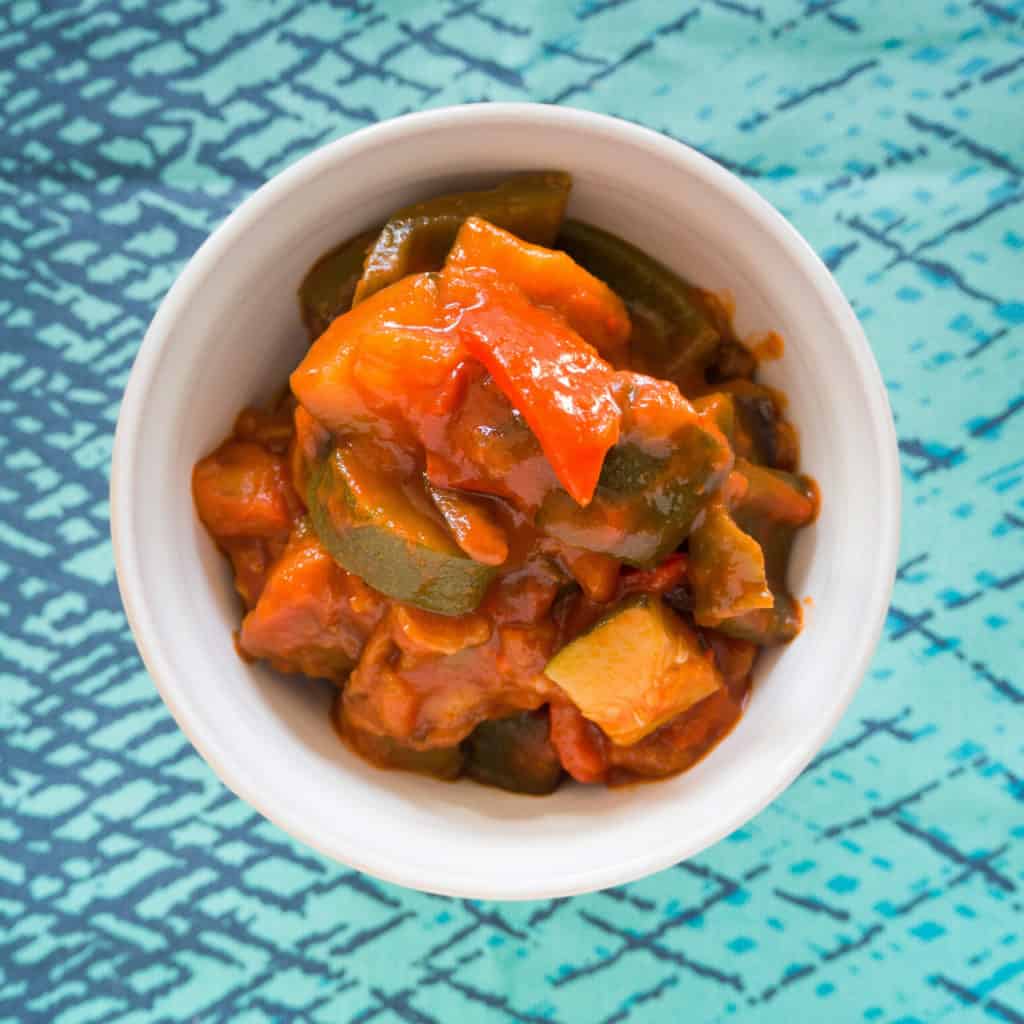
How about a nice, warm salad? This summer’s been a bit of a washout so far so a warm salad is PERFECT. I adore green beans dry-fried or grilled and who doesn’t love a good potato? (Especially as Jersey Royals are still just about around!) One of my favourite warm salads is Spicy, Grilled Green Bean and Potato Salad. Jersey Royal potatoes are a summer flash in the pan (and work so well with this salad but you can use any small, slightly waxy potato instead)!
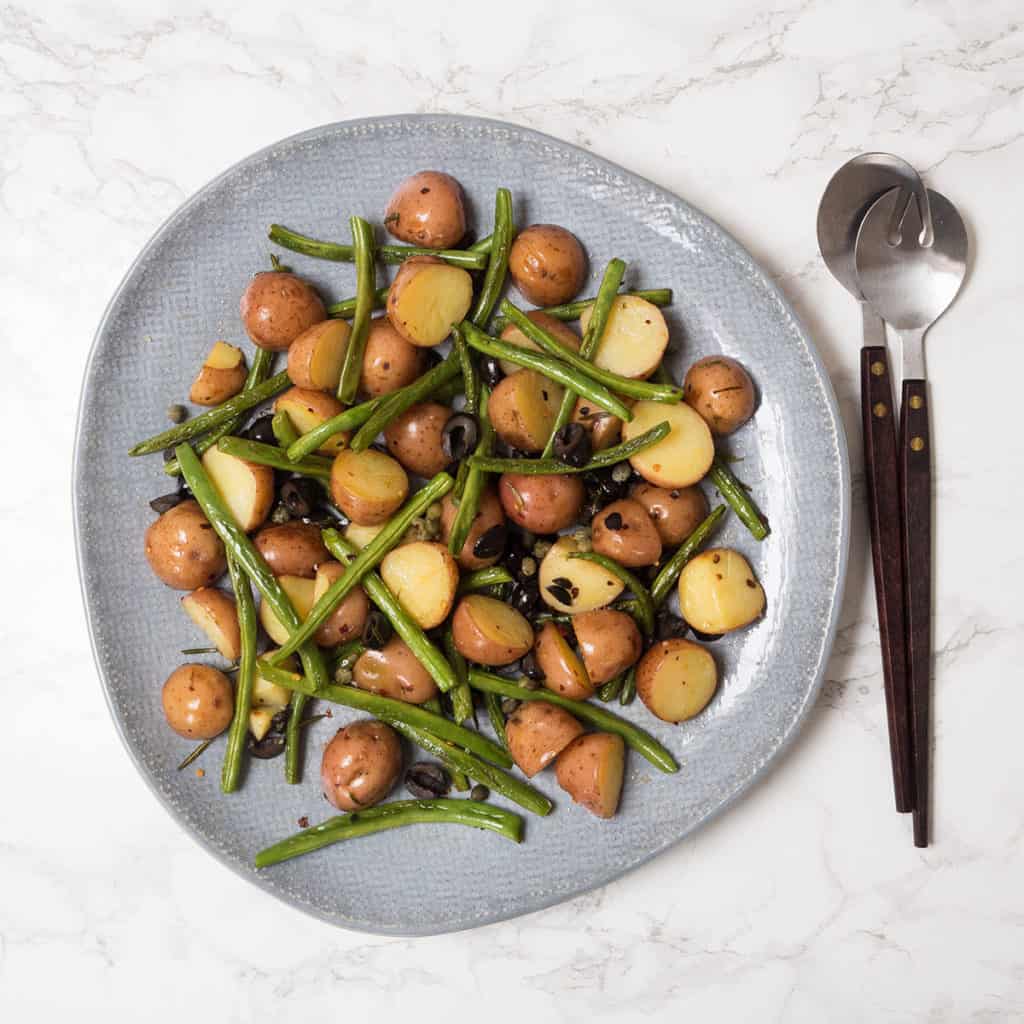
I have a massively sweet tooth so, I can’t share recipes with you without sharing one of my favourite low FODMAP sweet treats. Uber Rich Chocolate and Strawberry Brownies are very easy and super delicious. Gooey, chocolatey, packed with sweet strawberries and topped with melted chocolate these brownies are fabulous.
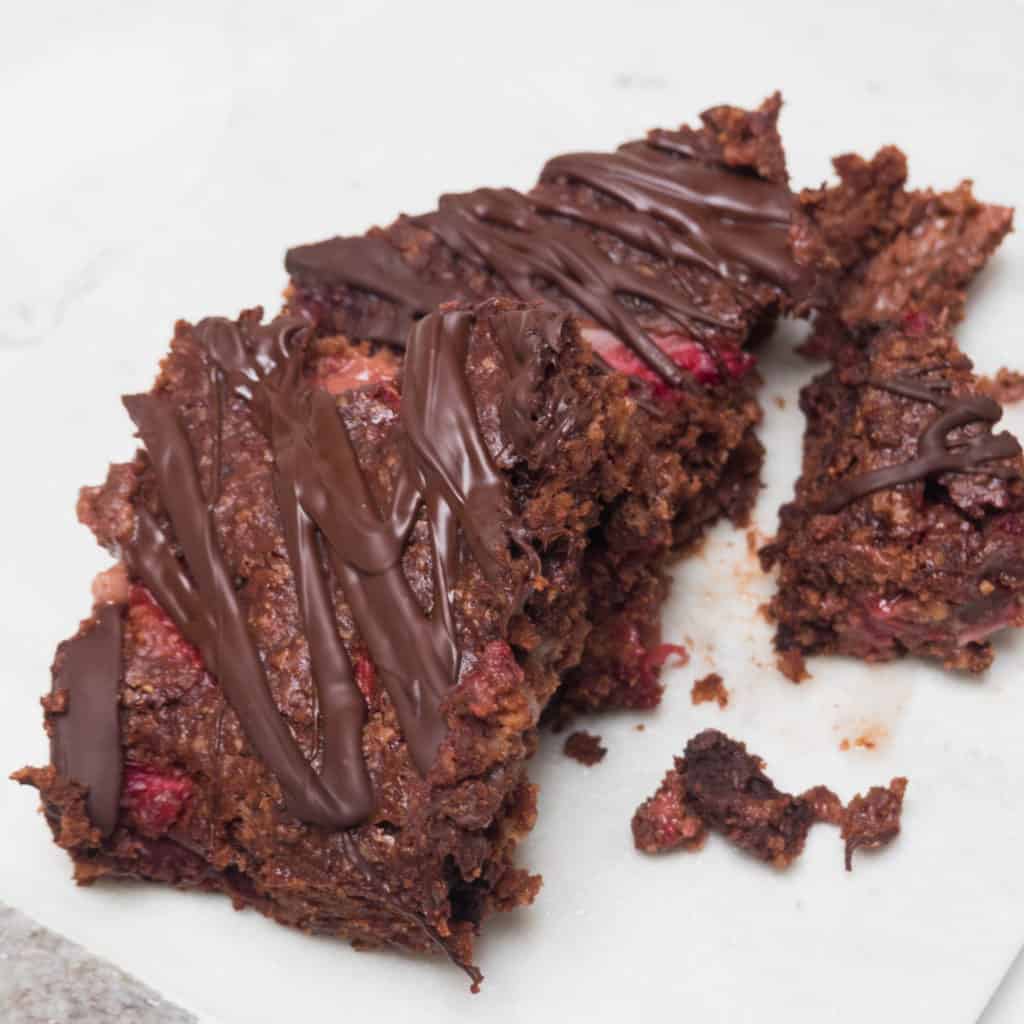
Are you low FODMAP? What was your journey to low FODMAP? Drop a comment below or ping me on social media! 🙂
***GET YOUR GLUTEN-FREE AND VEGAN AND LOW FODMAP CHEAT SHEET BY CLICKING HERE***
